
JULIA LEE BARCLAY-MORTON – YOGA, WATER AND REWRITING AUTISM
I interviewed writer Julia Lee Barclay-Morton about her experience of autism. Julia began as an experimental dramatist in New York, moving to the UK to
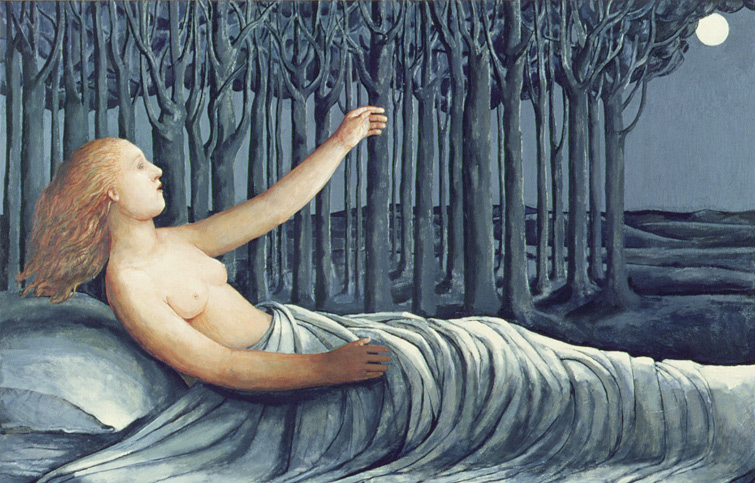
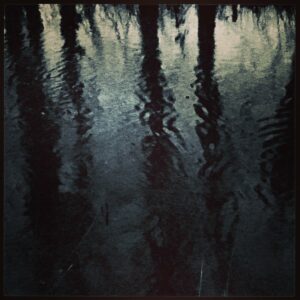
I interviewed author and art blogger Katy Wimhurst about her distinctive personal world that includes M.E., art, surrealism, anthropology, Dada, magical realism, spirituality, politics, environmentalism and meditative musings.
Katy’s first book of short stories, Snapshots of the Apocalypse, will be published by Fly on the Wall Press in January 2022. Katy’s writings have appeared in Shooter, Tasting Notes & Other Short Stories, Magic Oxygen and To Hull And Back anthologies and Earlyworks Press.
Leslie: How did your early life foreshadow and develop the wide range of creative/ political/social interests you have today?
Katy I was quite a sensitive, imaginative child, always with scissors or crayons in hand, always writing stories and even plays (I remember a play at primary school set in the stone-age, which featured the characters Ugg and Glugg!). However, I went to a posh academic private girls’ secondary school which didn’t encourage much creative or critical thinking. I left that school with good qualifications and a place at a good university (and for that I am grateful), but with little understanding of myself or the world, and detached from any real creative impulse. In retrospect, I think that took its psychological toll; and although I didn’t articulate it at the time, being at the private school (from a more normal background than most there) also sensitised me to the malign effects of class, privilege, even snobbery. I was outdoorsy too and grew up by the sea, which offered an antidote to the stuffy school environment; since then, the natural world has always been a sanctuary for me. Just before going to university, I travelled for a couple of months in Australia and met a whole bunch of activists, environmentalists, hippies in rainbow-painted caravans; the holes in my formal education came sharply into focus and it was like I’d come ‘home’ in meeting them. Since then, I’ve always cared about progressive politics, the environment and underdogs, and I have also been drawn to radical art or cultural movements with a rich imaginative vein (I did a PhD on Surrealism). I agree with Ursula Le Guin that ‘The exercise of imagination is dangerous to those who profit from the ways things are because it has the power to show that the way things are is not permanent, not universal, not necessary’.
Leslie: You have some absolutely wonderful art on your blog. Can you introduce us to some of it, please?
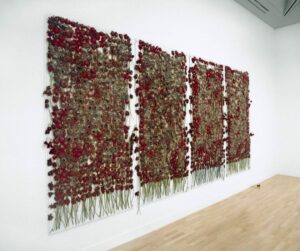
Katy: Much visual art I like explores either the natural world or the intense world of the imagination. Anya Gallaccio, for instance, has an intriguing way of including natural processes within gallery-based artwork. She creates site-specific installations, often using organic matter such as flowers, fruit, ice, wax and chocolate. The art changes over time, rotting, melting, being oxydised – like an unruly experiment. I appreciate how she explores long-established themes in art – mortality, decay – in a contemporary, quirky manner. You can read more about Anya’s art on my blog here.

Another piece of environmental art I find breath-taking is Desert Breath: A Spiral of Infinity. A monumental piece of land art, the spiral covers an area of 100,000 metres square and was created in 1997 in the desert at El Guoana, Egypt, by a collective that included an architect and industrial designer. It was intended as an exploration of infinity, but still exists in a slowly decaying form (and can be seen on Google Maps) as a meditation on the passage of time. I’ve written more about this artwork on my blog here.

Australian sculpture Bronwyn Berman creates alluring works that reflect on the natural world. Her art seeks to ‘encourage a respect for our place in the evolution of landscape as part of the processes of nature.’ Organic signs and symbols recur – spirals, circles, pods. I especially love her Windspirals, big works which look so ethereal yet are made of aluminium and stainless steel with timber support. You can read more about Bromwyn’s art on my blog here.
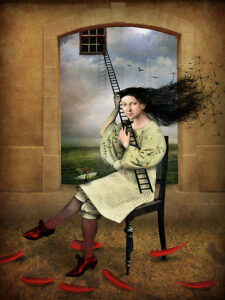
Catrin Welz-Stein creates strange, magical images from combining old photo fragments, paintings and illustrations. If I ever need inspiration for a magical realist short story, Welz-Stein’s images are a go-to. Her artworks engender a poetic world reminiscent of fairy tales and surrealism; some are unsettling, others more whimsical. Each picture seems to tell a fragment of a story, one based on a hidden truth. I’ve written more about Catrin’s art here.
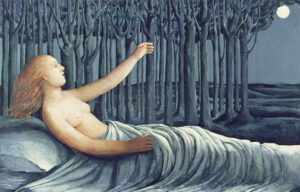
Evelyn Williams (1929-2012) pioneered a singular art of visionary power. I got into her work during the time I was going through a particularly painful breakup as her images seem to evoke loneliness and many of her figures seem to be groping in the dark. I particularly like how, even though female forms abound in her work and many of them are naked or simply dressed, she isn’t interested in eroticism but vulnerability and emotion. Her subject is human experience and human relationships, but I like how she doesn’t do domestic or cosy. My blog has a piece about Evelyn’s work. You can read it here.
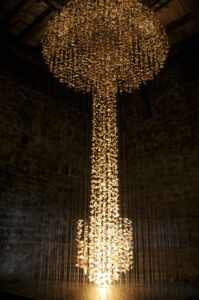
Chris Drury’s art addresses our relationship to the natural world, meditating on ecological and cultural themes. My favourite, which holds the kind of beauty and terror described in a Rilke sonnet, is ‘Mushroom Cloud’ (2010, 2.3m x5m), made from 6000 dried fungi slices set in acrylic and suspended by nylon wire from a steel shell. It is a haunting work that looms above the viewer and draws associations between natural and human realms – the mushroom and the atomic bomb. You can read more about Chris’s art at my blog here.
Leslie: Can you describe your own writing and how it relates to your major interests?
Katy: : I mainly write short fiction, particularly surrealist, magical realist and dystopian; my first book, out in 2022, is titled Snapshots of the Apocalypse. I like writing in these genres because there are fewer restrictions on what can happen in a story and more space for odd imagery and ideas. I like the challenge of creating just off-kilter worlds, one foot very much in this world, the other in a different, askew one. The stories I enjoy reading inhabit this fizzling world between the everyday and extraordinary, the mundane and the weird. Much of the fiction I write is pretty dark – addressing themes of apocalypse, dystopia, madness, unemployment, ecological breakdown – and I think the strange or magical elements in the tales allow for a healthy dose of wonder or fun, an antidote to all the grim. After all, life is magical as well as dark. Magical realism also tends to be associated with writers and perspectives that come from the margins in some way (women, ethnic minorities, non-westerners), while surrealism has always been an attempt to question western culture from within; that both genres have an arguably subversive impulse appeals to me.
In 2019, I started work on a magical realist/dystopic novel – my first stab at anything of length – that explores inequality in a future authoritarian UK where climate change has kicked in and class divisions are even more entrenched. Again, one of the great things about magical realism is you can chuck in strange ideas – parrots that talk in pithy aphorisms, trees that whisper human wishes – to hopefully lift the story up from its prevailing dark tone. Sadly, due to a severe relapse in my illness, I’ve now had to put the novel on hold.
Leslie: How has your chronic illness affected your creative & critical work?
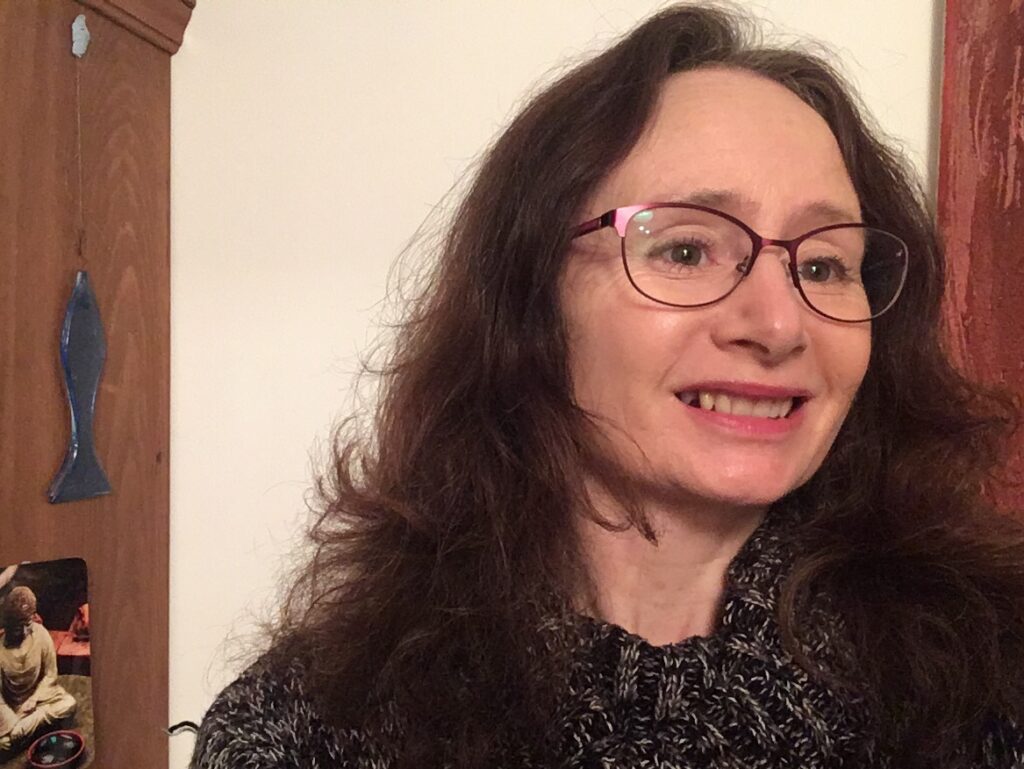
Katy: I don’t think I would have ended up writing fiction (or indeed, taking quite so many photos on my phone) if I hadn’t got ill. I would have continued in academia or moved into curatorial work or publishing. When I was first severely ill with M.E. – which is a hugely disabling illness (even if many medics misconceive and trivialise it) – I was way too ill to do anything creative. I know formerly creative people now who are so ill, with such cognitive dysfunction and exhaustion, that little imaginative life is possible – existence is just about daily survival. I’m reluctant to represent a severe illness like M.E. as something that engenders creativity; if anything, it shuts it down – and particularly in this political environment when sick people spend so much time and energy fighting for the social security that is legitimately theirs. However, I was fortunate in that my health gradually improved to a more moderate M.E, and I started writing some short fiction and submitting to competitions. This was fun and was also a way of exploring my experience, if obliquely – I rarely write autobiographically but how I experience the world, including the challenges of living with a long-term condition, informs my writing.
Being ill, especially with a misunderstood and misrepresented illness like M.E. and at this point in history (when the sick and disabled are suffering austerity while the rich get tax cuts), has also honed my understanding of oppression/injustice and of the importance of resisting these – there has to be hope.
You can read three short stories by Katy here:
Next week I interview long-distance cyclist, Anna Hughes, about her rides across the UK and Europe, her books, her veganism, living on a houseboat and her organising role in ‘Flight Free UK’
ABOUT LESLIE TATE’S BOOKS:

I interviewed writer Julia Lee Barclay-Morton about her experience of autism. Julia began as an experimental dramatist in New York, moving to the UK to

I interviewed Gillean McDougall from Glasgow, who edited the collaborative projects Honest Error (on Charles Rennie Mackintosh and his wife Margaret Macdonald) and Writing the

I interviewed French writer Delphine de Vigan, whose book, No et moi, won the prestigious Prix des libraires. Other books of hers have won a clutch

I interviewed Joanne Limburg whose poetry collection Feminismo was shortlisted for the Forward Prize for Best First Collection; another collection, Paraphernalia, was a Poetry Book Society Recommendation. Joanne

I interviewed Katherine Magnoli about The Adventures of KatGirl, her book about a wheelchair heroine, and Katherine’s journey from low self-esteem into authorial/radio success and
| Cookie | Duration | Description |
|---|---|---|
| cookielawinfo-checkbox-analytics | 11 months | This cookie is set by GDPR Cookie Consent plugin. The cookie is used to store the user consent for the cookies in the category "Analytics". |
| cookielawinfo-checkbox-functional | 11 months | The cookie is set by GDPR cookie consent to record the user consent for the cookies in the category "Functional". |
| cookielawinfo-checkbox-necessary | 11 months | This cookie is set by GDPR Cookie Consent plugin. The cookies is used to store the user consent for the cookies in the category "Necessary". |
| cookielawinfo-checkbox-others | 11 months | This cookie is set by GDPR Cookie Consent plugin. The cookie is used to store the user consent for the cookies in the category "Other. |
| cookielawinfo-checkbox-performance | 11 months | This cookie is set by GDPR Cookie Consent plugin. The cookie is used to store the user consent for the cookies in the category "Performance". |
| viewed_cookie_policy | 11 months | The cookie is set by the GDPR Cookie Consent plugin and is used to store whether or not user has consented to the use of cookies. It does not store any personal data. |
7 responses
A really enjoyed this article with Katy Whim, Leslie. She shares some similar ideas to me about the future of society and social classes and I am also writing a dystopian novel about this. The artwork she shared is amazing.
Thanks, Robbie. I felt, as the interviewer, that this was a really rich, multi-layered response.
What a fascinating piece, illustrated with the work of artists unknown to me but all of them of interest and many exploring important themes in a way I find powerful and beautiful. This is a thoughtful, honest blog about creativity, illness and humanity, and Katy’s story is one of revelation.
Yes, I learned a lot from conducting this interview!
Leslie and Katy, Thank you for a terrific interview. Like Katy, I’m drawn to magical realism for its power to heal, to unify, to pull one toward transcendence. The artwork you have here is exquisite. Berman’s Windspiral is haunting and enigmatic. Catrin Welz-Stein’s Ladder 2 is an example of her magnificent range. Of course, I would love it, she did the artwork on my first book cover!
I totally agree, Robin. I was so pleased to have the chance to interview Katy!
Thanks for your kind comments Robbie, Sue and Robin. It was a pleasure to be interviewed by Leslie and I’m glad you found it interesting.
Robin – I’ve just looked up your wonderful book, The Improbable Wonders…. I look forward to reading it.
Robbie – just looked up you too, Sir Chocolate series and When Bombs Fell, both which look excellent . I shall buy the latter for my mum who lives in Suffolk.
Robbie